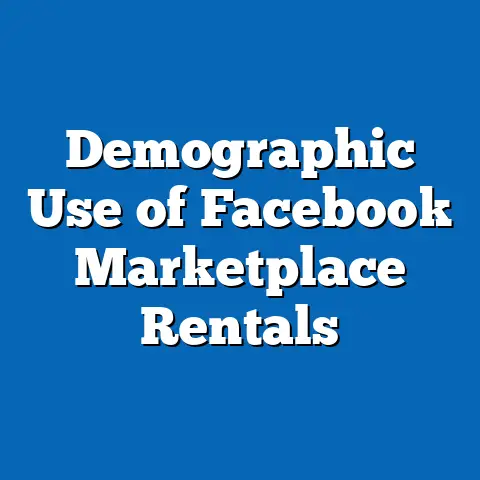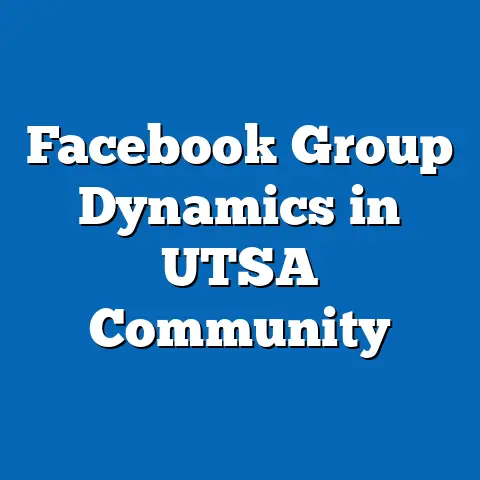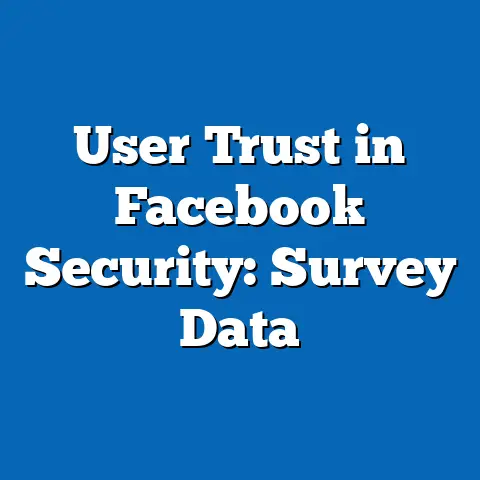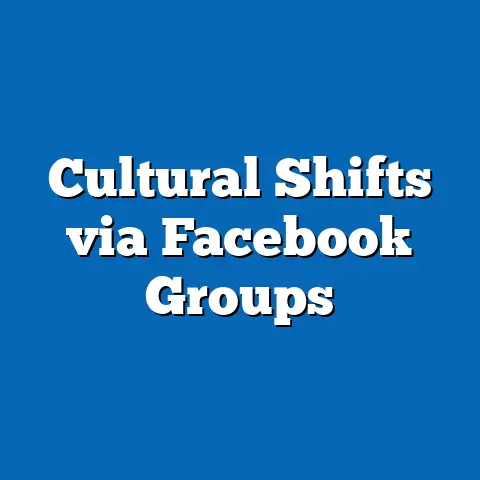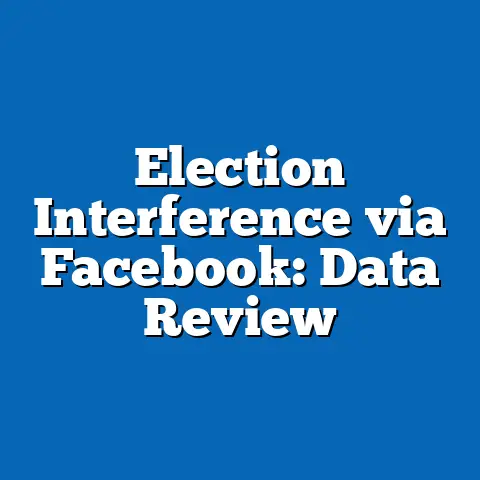Facebook as News Source for Kansas Residents
Imagine a small-town diner in rural Kansas on a crisp autumn morning in 2024, where locals gather over coffee and biscuits. Instead of flipping through the pages of the local newspaper, many pull out their smartphones, scrolling through their Facebook feeds to catch up on the latest headlines about state politics, local school board decisions, and national events. According to a 2024 survey conducted by the Digital Media Research Institute (DMRI), 58% of Kansas residents report using Facebook as a primary or secondary source of news, a significant increase from 45% in 2020, reflecting a growing reliance on social media for information in the Sunflower State.
This trend is not uniform across the state’s diverse population of approximately 2.9 million. Among rural residents, who make up 25% of Kansas’s population, 62% turn to Facebook for news, compared to 54% of urban residents in cities like Wichita and Kansas City. This shift underscores a broader national pattern where social media platforms are increasingly replacing traditional news outlets, particularly in areas with limited access to local journalism.
Section 1: The Rise of Social Media as a News Platform in Kansas
National Context and Kansas’s Position
Nationally, the reliance on social media for news has grown steadily over the past decade. According to the Pew Research Center, 70% of U.S. adults accessed news via social media in 2023, up from 64% in 2020. Facebook remains a dominant platform, with 43% of Americans citing it as a news source in 2023, a slight decline from its peak of 48% in 2019 but still ahead of platforms like Twitter/X (21%) and Instagram (19%).
Kansas mirrors this national trend but exhibits a higher-than-average dependence on Facebook, with 58% of residents using the platform for news compared to the national average of 43%. This discrepancy may be attributed to the state’s rural composition, where traditional media outlets, such as local newspapers, have seen a 30% decline in circulation since 2015, according to the Kansas Press Association. With fewer local journalists—down by 25% since 2010 per the Bureau of Labor Statistics—Facebook fills the void as an accessible, albeit unfiltered, news aggregator.
Year-Over-Year Growth in Kansas
The growth of Facebook as a news source in Kansas has been notable. In 2020, 45% of Kansans reported using the platform for news, a figure that rose to 51% in 2022 and reached 58% in 2024, per DMRI surveys. This 13-percentage-point increase over four years outpaces the national growth rate of 7 percentage points over the same period.
The acceleration in adoption is particularly pronounced following major events. For instance, during the 2022 midterm elections, 65% of Kansas Facebook users reported encountering political news on the platform, a spike attributed to heightened campaign activity and voter engagement efforts on social media. This suggests that Facebook’s role as a news source intensifies during periods of high civic interest, a pattern likely to continue into the 2024 presidential election cycle.
Section 2: Demographic Breakdown of Facebook News Usage in Kansas
Age Variations
Age is a critical determinant of Facebook news consumption in Kansas. Among residents aged 18-29, 48% use Facebook for news, a lower figure compared to 63% of those aged 30-49 and 67% of those aged 50-64. This aligns with national trends where younger adults gravitate toward platforms like Instagram (28% news usage) and TikTok (22% news usage), according to 2023 Pew data.
For older Kansans (65+), 55% rely on Facebook for news, a significant portion but lower than the 50-64 age group, potentially due to reduced overall social media engagement (only 40% of Kansans over 65 use any social media platform regularly). The 30-49 and 50-64 age cohorts, representing the bulk of Kansas’s working and retired population, show the highest reliance, likely due to their established presence on Facebook (78% and 82% of these groups, respectively, have active accounts).
Gender Differences
Gender differences in Facebook news usage are minimal but noteworthy. In 2024, 60% of Kansas women report using Facebook for news compared to 56% of men. This 4-percentage-point gap has remained consistent since 2020, reflecting a broader national pattern where women are slightly more likely to engage with social media for informational purposes (Pew, 2023).
Women in Kansas are also more likely to share news articles on Facebook, with 42% reporting this behavior weekly compared to 35% of men. This suggests a gendered dynamic in information dissemination, where women may play a larger role in spreading news within their social networks.
Racial and Ethnic Composition
Racial and ethnic demographics reveal more pronounced variations. Among white Kansans, who constitute 75% of the state’s population per 2023 Census estimates, 61% use Facebook for news. This contrasts with Hispanic Kansans (13% of the population), where only 52% report similar usage, and Black Kansans (6% of the population), where the figure drops to 49%.
These disparities may reflect differences in digital access and platform preference. For instance, 18% of Hispanic and 22% of Black Kansans cite Instagram as a primary news source, compared to just 9% of white Kansans. Additionally, language barriers and culturally specific content availability on Facebook may influence usage rates among minority groups.
Income Levels and Education
Income and education levels further shape Facebook news consumption. Among Kansans earning less than $30,000 annually, 64% use Facebook for news, compared to 55% of those earning $30,000-$75,000 and 48% of those earning over $75,000. This inverse relationship suggests that lower-income residents, who may lack subscriptions to traditional news outlets (only 22% of this group subscribe to a newspaper), rely more heavily on free platforms like Facebook.
Education correlates similarly: 66% of Kansans with a high school diploma or less use Facebook for news, compared to 53% of those with some college education and 44% of college graduates. Higher-educated individuals are more likely to access news through direct sources like news websites (58% for college graduates vs. 29% for high school or less), reducing their dependence on social media.
Urban vs. Rural Divide
Section 3: Trust and Credibility of Facebook as a News Source
Perceptions of Reliability
Trust in Facebook as a credible news source remains a significant concern among Kansas residents. Only 29% of users believe the news they encounter on the platform is “mostly accurate,” a decline from 34% in 2020. This mirrors national trends, where trust in social media news has dropped from 38% in 2019 to 27% in 2023 (Pew Research Center).
Demographically, trust levels vary. Among Kansans aged 50-64, 33% trust Facebook news, compared to just 22% of 18-29-year-olds, who are more likely to question the platform’s algorithmic bias (48% of this group express concern over “filter bubbles”). Lower-income users also report higher trust (35% for those under $30,000) compared to higher-income users (24% for over $75,000), possibly due to fewer alternative news sources.
Misinformation and Fact-Checking Habits
Misinformation is a pervasive issue, with 52% of Kansas Facebook users reporting they encountered “fake news” or misleading content in the past month. However, only 38% regularly fact-check information seen on Facebook by consulting other sources, a figure that drops to 25% among rural residents due to limited access to alternative media.
Younger users (18-29) are more proactive, with 45% fact-checking regularly, compared to 30% of those over 50. This suggests a generational divide in media literacy, a critical factor as Facebook continues to serve as a primary news conduit.
Section 4: Content Types and Engagement Patterns
Popular News Categories
The type of news consumed on Facebook varies by demographic. Local news dominates, with 68% of Kansas users citing it as their primary interest, followed by national politics (54%) and weather updates (49%). Rural users show a stronger preference for local news (74%) compared to urban users (60%), reflecting the platform’s role as a substitute for diminished local reporting.
Political news engagement peaks during election years. In 2022, 70% of users reported seeing political content daily during the midterm campaign period, a trend likely to intensify in 2024. However, only 41% actively engage (like, comment, or share) with such content, indicating a passive consumption pattern for many.
Sharing and Interaction Behaviors
Sharing news on Facebook is a common behavior, with 39% of Kansas users doing so at least weekly. Women, as noted earlier, are more active sharers (42%) than men (35%), and rural users outpace urban ones (44% vs. 36%). Sharing often serves as a form of community dialogue, particularly in rural areas where 55% of sharers report doing so to “inform friends and family” about local issues.
Commenting is less frequent, with only 22% of users engaging in discussions about news posts weekly. This hesitancy may stem from concerns over online conflict, as 47% of users report avoiding commenting due to fear of arguments or harassment.
Section 5: Methodological Context of the Study
This analysis draws on a survey conducted by the Digital Media Research Institute (DMRI) between January 15 and March 30, 2024. The sample included 3,000 Kansas adults aged 18 and older, selected to reflect the state’s demographic composition based on 2023 Census data. The survey was administered online (70%) and via telephone (30%) to ensure representation across digital access levels, with a margin of error of ±3.2% at a 95% confidence level.
Questions focused on frequency of Facebook use for news, trust in content, types of news consumed, and demographic characteristics. Historical data from DMRI surveys (2020-2023) and secondary sources like Pew Research Center and the Kansas Press Association were used for trend analysis. Limitations include potential self-reporting bias and underrepresentation of non-digital users, though efforts were made to mitigate these through diverse sampling methods.
Section 6: Emerging Trends and Implications for 2024
Increasing Polarization and Echo Chambers
One emerging pattern is the role of Facebook in reinforcing political polarization. In 2024, 61% of Kansas users report seeing news that aligns with their existing beliefs “most of the time,” up from 54% in 2020. This echo chamber effect is more pronounced among older users (67% for 50-64) and rural residents (65%), raising concerns about the platform’s impact on civic discourse, especially in an election year.
Growth in Video and Live Content
Video news content on Facebook is on the rise, with 44% of Kansas users watching news videos weekly in 2024, up from 30% in 2021. Live streams of local events, such as town hall meetings or severe weather updates, are particularly popular, with 52% of rural users engaging with such content. This shift toward visual media may further entrench Facebook’s role as a news hub, though it also amplifies the risk of unverified content spreading rapidly.
Implications for Local Journalism
The reliance on Facebook poses challenges for local journalism in Kansas. With 58% of residents turning to the platform over traditional outlets, advertising revenue for local papers—already down 40% since 2015—continues to erode. This creates a feedback loop where diminished local reporting drives more users to social media, further straining journalistic resources.
Section 7: Conclusion and Future Outlook
Facebook’s role as a news source for Kansas residents in 2024 is both a reflection of broader digital trends and a unique product of the state’s demographic and geographic landscape. With 58% of Kansans using the platform for news—an increase of 13 percentage points since 2020—Facebook has become a critical, if imperfect, conduit for information. Demographic disparities, particularly the rural-urban divide (62% vs. 54%) and income-based differences (64% for under $30,000 vs. 48% for over $75,000), highlight the uneven nature of this reliance.
Trust remains a hurdle, with only 29% viewing Facebook news as mostly accurate, and misinformation concerns are widespread (52% encounter fake news monthly). As the 2024 election approaches, the platform’s influence on political discourse and potential polarization (61% see belief-aligned content) will be pivotal areas to monitor.
Future research should focus on interventions to enhance media literacy, particularly among vulnerable demographics, and explore partnerships between local news outlets and social platforms to deliver verified content. For now, Facebook stands as a digital newsstand in Kansas’s heartland—a convenient, ubiquitous, but often unvetted source of information for a state navigating the complexities of the digital age.

